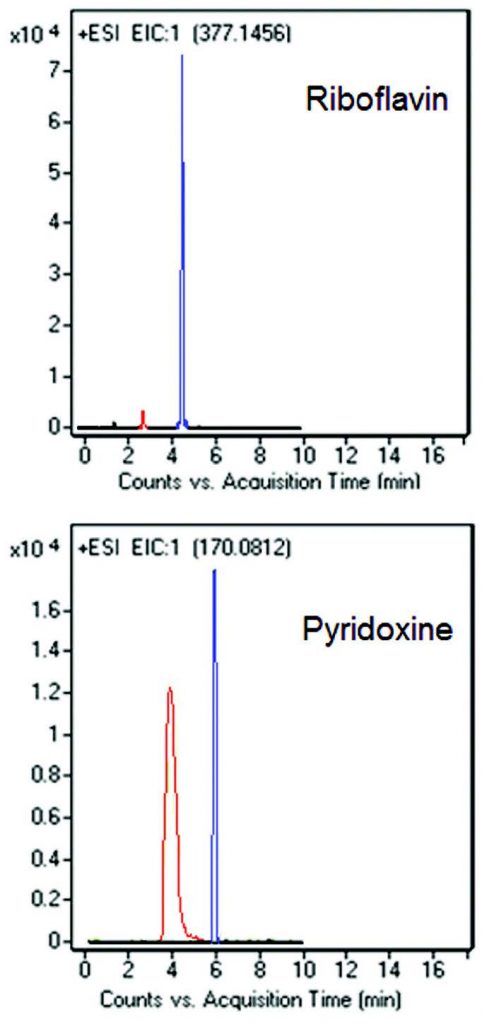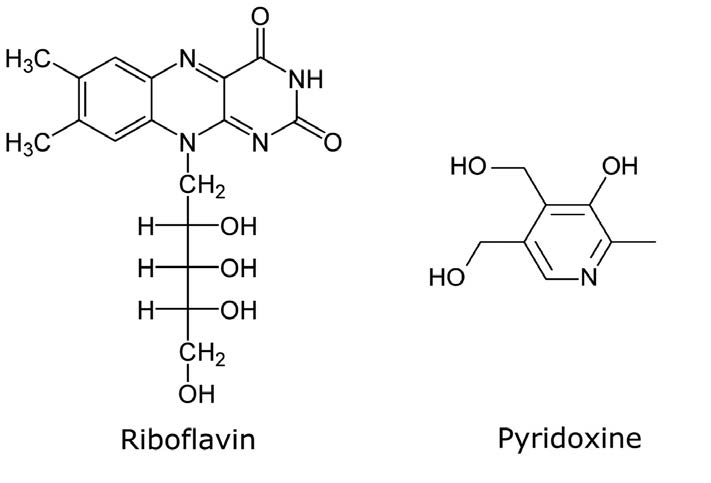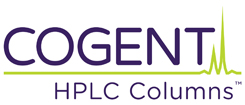Different Mobile Phase for LCMS from a UV Method was Needed
Hydrophilic Vitamin analyses were developed using UV detection. However, when the same Method and Mobile Phase was tried with MS Detection, the Peak intensities were very low and Peak Shape for Pyridoxine was not acceptable (see Red Peaks in Figures below).
The Mobile Phase was changed and did not include Ammonium Formate since Positive Mode of Ionization was used with the MS. The Peaks (see Blue Peaks in Figures), were much more Symmetrical, well Separated from each other and Peak intensities were much higher. pH should always be considered when transferring methods from UV to LCMS.
Peaks:
Riboflavin 377.1456 m/z [M+H]+
Pyridoxine 170.0812 m/z [M+H]+
Method Conditions
Column: Cogent Diamond Hydride™, 4μm, 100Å
Catalog No.: 70000-15P-2
Dimensions: 2.1 x 150mm
Mobile Phases:
–For Red Peaks
—A: DI Water with 10mM Ammonium Formate / 0.05% Formic Acid (pH 3.5)
—B: 95:5 Acetonitrile / 10mM Ammonium Formate (w/v pH 6.5)
–For Blue Peaks
—A: 50:50 DI Water / 2-Propanol with 0.1% Formic Acid
—B: Acetonitrile with 0.1% Formic Acid
Gradient:
| Time (minutes) | %B |
| 0 | 95 |
| 1.5 | 95 |
| 4 | 30 |
| 5 | 30 |
| 6 | 30 |
| 7 | 95 |
Post Time: 3 minutes
Injection vol.: 1μL
Flow rate: 0.4mL / minute
Detection: ESI – POS – Agilent 6210 MSD TOF Mass Spectrometer
Samples:
—Stock Solution: Riboflavin 5mg / L and Pyridoxine 100mg / L in 50:50 Solvent A / Solvent B. The solution was filtered through a 0.45μm Syringe Filter (MicroSolv Tech Corp.).
—Samples for Injection were diluted 1:100 with 50:50 Solvent A:B mixture.
t0: 0.9 minutes
Note: Riboflavin and Pyridoxine are two types of B Vitamins and are shown in two different Chromatograms above. These compounds are hydrophilic and hence may be difficult to retain by conventional Reversed Phase Methods.
Attachment
No 244 Hydrophilic Vitamins Analyzed with LCMS pdf 0.4 Mb Download File




